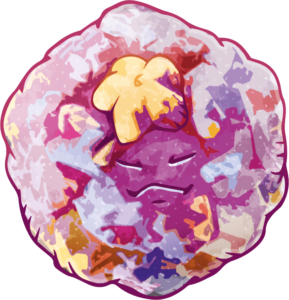Enterovirus

Enteroviruses are part of the Picornavirus family and, as their names suggest, are very small viruses with a size of around 30nm and a genome of around 8kb. It is an RNA virus with a capsid of icosahedral symmetry1 without an envelope with a single stranded RNA. There are many different serotypes among picornaviruses grouped into 2 types: the enterovirus2 genus and the rhinovirus3 genus. Among the enteroviruses, a distinction is made between coxsackieviruses, echoviruses, polioviruses and enteroviruses in the strict sense.
Contaminated water
The transmission of enteroviruses is mainly faecal-oral via contaminated water. The various enteroviruses cause epidemics that are often seasonal in summer. In terms of symptoms, the excretion of the virus in the stool may be asymptomatic. But there are also various clinical presentations: febrile state without an infectious focus, meningitis4 (called aseptic), poliomyelitis5.

Public swimming pools and summer meningitis
Note that acute meningitis in summer is most often viral and mainly caused by enteroviruses. The disease then progresses spontaneously benign and is treated with febrifuges6 and / or painkillers (paracetamol, for example). The importance of a diagnosis in this situation is to quickly prove it to be viral meningitis and rule out bacterial meningitis which requires immediate empiric antibiotic treatment. This early diagnosis of enterovirus meningitis is based on rapid PCR tests.

Polio
Success of the vaccines

